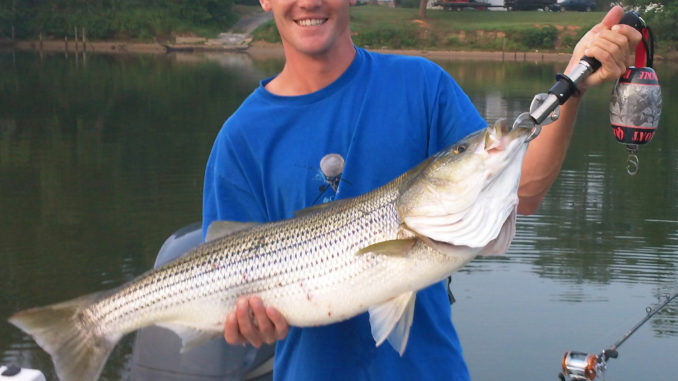
This foothills reservoir is home to plenty of stripers that will bite even in August. Here are the hows and wheres.
Almost a hundred years ago, Duke Power began its project to electrify North Carolina’s foothills by building a series of dams along the length of the Catawba River.
Lake Hickory wasn’t the biggest impoundment on the system, and it wasn’t the first one finished. Fairly narrow, it stretches eastward from the northern outskirts of its namesake city roughly 15 miles to Oxford Dam.
As a fishery, it appears to be a middle-of-the-road Catawba River reservoir: fair-to-good bass, fair-to-good crappie, fair-to-good catfish, fair-to-good bream and shellcrackers, with a few who-know-where-they-came-from walleye occasionally showing up unexpectedly.
But perhaps it’s another game fish that is Lake Hickory’s signature. Over the past dozen years, more and more fishermen are discovering that the 4,223-acre reservoir holds a fairly impressive population of striped bass.
It doesn’t have the numbers of smaller stripers that mark Lake Norman’s fishery, nor the trophies that draw fishermen to Lake Rhodhiss upstream and Lookout Shoals Lake downstream, but Hickory might be the perfect compromise.
As guide Colt Bass likes to say, Hickory is full of “teen-agers.”
Bass, 29, is a Lenoir native who fishes Lake James, Lake Rhodhiss and Lake Hickory regularly. It’s those stripers from 13 to 19 pounds that set Hickory apart from other lakes on the Catawba chain, and the fact that they’re catchable in the heat of the summer draws Bass to the upper end of the lake, where the habitat is more riverine in nature.
“The water temperature can get into the high 80s in the lake, but you can find water as cool as 74 or 75 up in the river this time of year,” Bass said. “That’s what draws the stripers.
“If you’re going to fish for stripers this time of the year, most of the time you’re going to be up on this end.”
Bass likes to drift live blueback herring or gizzard shad on downriggers or the side of his center-console with planer boards.
1) Little Creek Mouth
35 46 035N/82 35 960W
Bass likes to drift past this creek mouth with live bait out on planer boards. The key spot is where the creek intersects the river channel and is a quarter-mile or so upstream from a railroad bridge that crosses the river.
“In the summer, you’re going to get fish gathering at the creek mouth for the shad,” Bass said. “It’s just a little dip, a foot to a foot-and-a-half, and they’ll lay up in that trough. It’s a great summertime place.”
2) Rock Face
35 45 932N/81 24 680W
Depending on whether or not current has been set up by Duke Power generating through either Rhodhiss Dam upstream or Oxford Dam downstream, Bass targets stripers differently.
“If they’re running water, this is a great place to for a planer-board or free-line bite,” he said. “If they’re not running water, you need to be fishing 15 feet or deeper, pulling down lines.”
Bass said when they’re pulling water, stripers will move up on the flat. If they’re not, they’ll be deep. “Any place you find a hole, you’ll find a striper,” he said.
3) RR Bridge Creek Mouth
35 45 513N/81 24 048W
The creek channel comes straight out under the bridge that runs parallel to the lake’s shoreline.
“On the right side, looking at the bridge, there’s an old cinder block, and there’s a sand bar that comes out,” Bass said. “The stripers will lay up on it and feed, and they’ll also get on their bellies in the (channel).
“It’s 6 feet deep on the sandbar and 10 feet deep in the trough. The stripers will get in there and feed on bait that’s moving out of the creek.”
4) US 321 Bridge Pilings
35 45 414N/81 22 680W
Bass said the pilings that are closer to the river channel will hold more fish.
“They’re in 7 to 15 feet of water, and the stripers will hold behind the pilings, using them as a current break,” he said. “They can relax and let the current push the baitfish past them.
“The fishing is a lot better when they’re generating, but a good wind will do it, too.”
Bass said he’ll make a pass under the dam with live bait on free lines and/or planer boards.
“If I catch a fish, I’ll come back and work it again,” he said.
5) Mouth of Horseford Creek
35 45 977N/81 21 499W
The fishing begins about 100 yards off the mouth of the creek, where the water is approximately 14 feet deep, Bass said.
“You’ve got depth irregularities there on top of it being a creek mouth,” Bass said. “The channel moves past on the outside bend. The creek mouth will draw stripers, because the whole lake is pushing into this bend.”
Bass likes to drift or slow-troll from a white boathouse back across the point and across the mouth of the creek and back.
6) Mouth of Gunpowder Creek
35 47 089N/81 21 198W
A big depth change greets you as you approach the point on the north side of the mouth of the creek, and that means stripers.
“As you go toward the point,” Bass said, “the depth goes from 35 feet to 20ish. You have the main point on the northwest side, close to the river channel. It runs out 60 yards. On the other side of the creek mouth, you’ve got a flat that runs out a ways.
“Both of them will hold fish.”
Bass will slow-troll or drift live baits across the point and the flat for stripers.
7) Main River Point Below NC 127
35 47 947N/81 17 877W
There’s no mistaking this point; it juts into the main river from the north side, and it’s home to a large, white house, plenty of riprap and some very interesting trees.
“The river channel runs on that side of the lake, and you’ve got a creek trough from the other side running right at the point, into the channel on the other side,” Bass said. “The point has stone coming out into the lake, and it holds bait. The herring can get on it because it’s deep. And there’s a little bay on the downstream side that holds fish.”
Bass also fishes the northern bank for several miles downstream.
“From here to Taylorsville Beach, it’s just camelbacks, all the way up,” he said. “If there’s a buoy (indicating a hump or shoal), there will be a striper there.”
8) Rink Dam Bay
35 49 367N/81 15 164W
Heading into the Rink Dam area, just inside the mouth, a huge bay on the left (north) side greets fishermen.
“There are two buoys for sandbars in the middle of the bay, and this is a good place to see ‘em bust shad on top,” Bass said. “The big sand bars are the main structure. On each side of the buoys, the grade goes down. The stripers will push shad onto the shallow flats.”
Don’t expect to have this spot to yourself.
“This is one of the biggest community holes on the whole lake,” Bass said. “You go in and make a big circle around the buoys.”
The proximity to Rink Dam helps pull stripers into the area.
“You’ve got Rink Dam pushing current right into the bay,” Bass said. “It’s not like it’s a big dam, but it does produce some current. It’s not heavily fished during the summer, but I’m sure you can catch some stripers in there year round.”
9) Reitzel Creek
35 48 582N/81 13 850W
The mouth of Reitzel Creek is only a couple of miles upstream from Oxford Dam on the lake’s southern bank.
Bass drifts or slow-trolls the creek channel in the summer, but says it’s even better in the winter.
“The west side has a point where the depth goes from 40 feet to the teens if you hug the bank,” he said. “In the winter, the back of this creek holds a lot of shad, and a lot of stripers will come in there for the shad.”
Colt Bass can be contacted at 828-381-3426 or www.coltbassfishing.com.

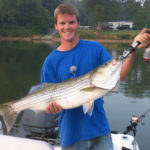
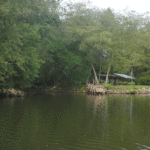
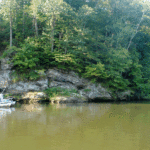
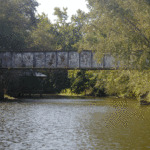
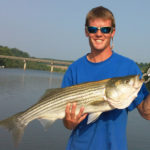
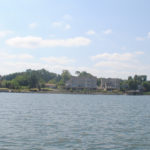
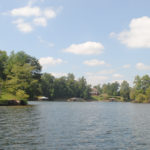
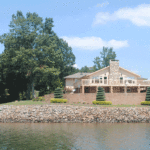
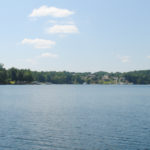
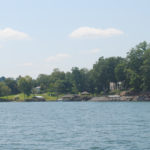

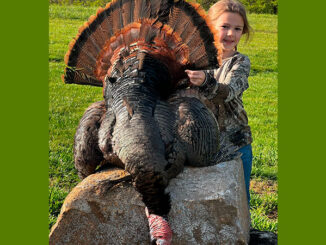
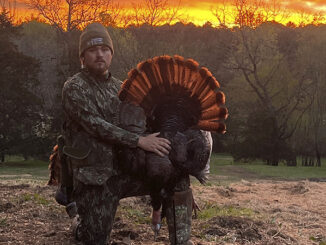

Be the first to comment